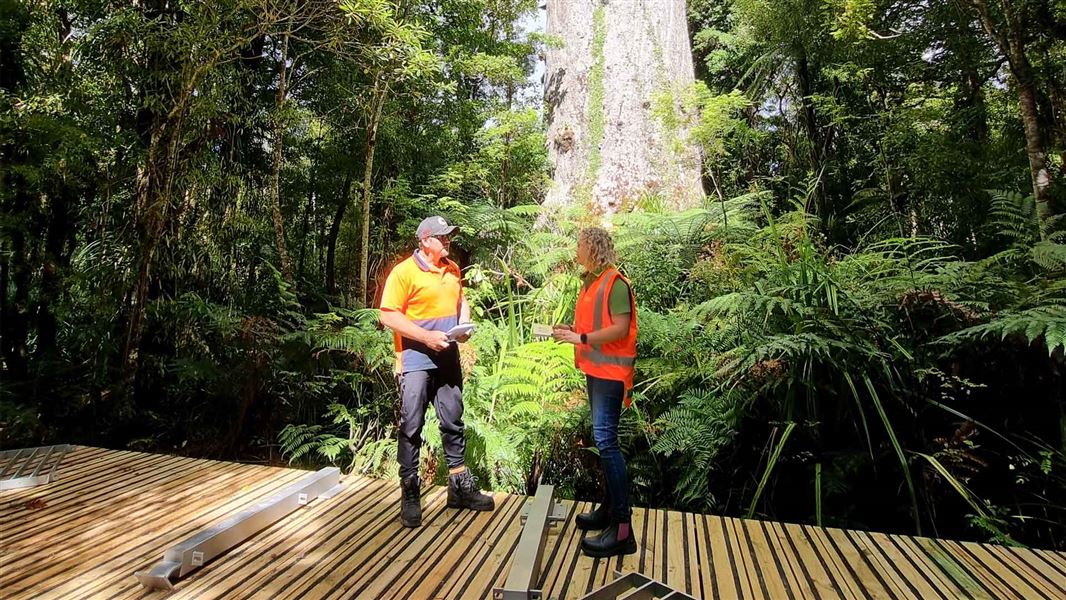
Introduction
Rākau Rangatira is a partnership project between DOC and Te Iwi O Te Roroa to upgrade both the visitor infrastructure and the visitor experience in Northland’s Waipoua Forest home of the sacred kauri tree Tāne Mahuta.The guiding principle of the project is ‘forest health first’. The impacts of kauri dieback disease, visitor safety, and better recognition and promotion of cultural values of the forest are core drivers for the project.
Waipoua and the adjoining forests of Mataraua and Waima make up the largest remaining tract of ancient kauri in the world.
Kauri dieback disease (Phytophthora agathidicida, PA) has been found within 60 metres of Tāne Mahuta. Across Northland, there is a strong correlation between kauri dieback disease and access trails. This suggests that humans are a significant vector in the spread of the disease.
The project is designed to ensure that the health and biodiversity of Waipoua is upheld for future generations.
Rākau Rangatira is funded by Budget 17, which is aimed to help DOC upgrade and develop tourist facilities on public conservation land. The fund also enables communities to respond to tourism demand. This includes facilitating future growth in some of New Zealand’s newer tourism regions.
Phase one – Replacing assets at Tāne Mahuta
Tāne Mahuta reopens with blessing – Media release 21 December 2024
A karakia and blessing by Te Roroa marked the formal reopening of Tāne Mahuta on 21 December 2024.
The walking track to Tāne Mahuta in Waipoua Forest has been closed since 30 September 2024 as part of the Rākau Rangatira project. The site now includes a specially designed raised boardwalk, bridge, and viewing platform, ensuring safer access while minimising ongoing environmental impact.
The project, delivered in partnership with Te Roroa, has worked with Northland Regional Council, DOC’s Plant Pathogens Team, Kauri Ora, and Tiakina Kauri to ensure all works have been managed in compliance with the National Pest Management Plan. Compliance measures utilised included isolation of workers from the ground, isolation of machinery, thorough cleaning of all tools and plant before delivery and throughout construction.
New assets largely occupy the same footprint as the old infrastructure to prevent unnecessary tree removals and pruning, and the overall design philosophy has focussed on longevity, resilience, and the minimisation of soil movement required during construction.
Visitors may now enjoy Tāne Mahuta with assets that will support protection of this irreplaceable taonga and enrich the visitor experience.
It is still essential however, that visitors follow good kauri hygiene practice by always remaining on the new structures and using the wash station when entering and exiting the forest.
Future phases
Future phases of the Rākau Rangatira project aim to:
- identify transformative approaches to deepen visitors’ connection to culture and nature,
- increase public safety,
- minimise environmental impact,
- allow visitors to play an active role in contributing to ongoing conservation.
Subsequent phases of the delivery of Rākau Rangatira will include replacement of boardwalks at Kauri Walks (Te Matua Ngahere and the Four Sisters) and supporting visitor infrastructure.
Contact
Please direct any enquiries to rakaurangatira@doc.govt.nz.